Thanks to a post-virus consumption rebound, China’s demand for luxury goods is projected to rise as much as 30% in 2020, becoming a bright spot for an industry that is experiencing a 45% decrease in worldwide spending, according to Boston Consulting Group, as reported by Bloomberg.
The second-hand luxury market is also expected to grow in China, according to a 2020 report co-published by luxury resale platform Youshe Yipai and China Luxury Research Center of the University of International Business and Economics.
“Right now, the market is in its infancy, with a future scale expected to reach RMB 1 trillion,” the report states, without indicating a time frame.
As COVID-19 lays economic pressure on families, many owners are considering selling their luxury goods for cash, while consumers are also seeking cheaper options to fulfill their demand, one of the authors of the report, Zhang Chen, told KrASIA. The trend is giving second-hand luxury e-commerce platforms such as Secoo, Ponhu, Plum, Feiyu, and Go Share 2, an opportunity to grow their user bases and increase their own brand notoriety.
Selling and buying pre-owned luxury goods isn’t a new business, as China had its first pawnshops as early as in the fifth century. Yet, as the trading process has moved online, sophisticated counterfeit goods still represent a challenge for the industry, the report indicates. Just to mention a few numbers, about 67.5% of Prada items in the nation’s market are replicas, while Micheal Kors has the lowest authenticity rate among all luxury brands, at 16.5%.
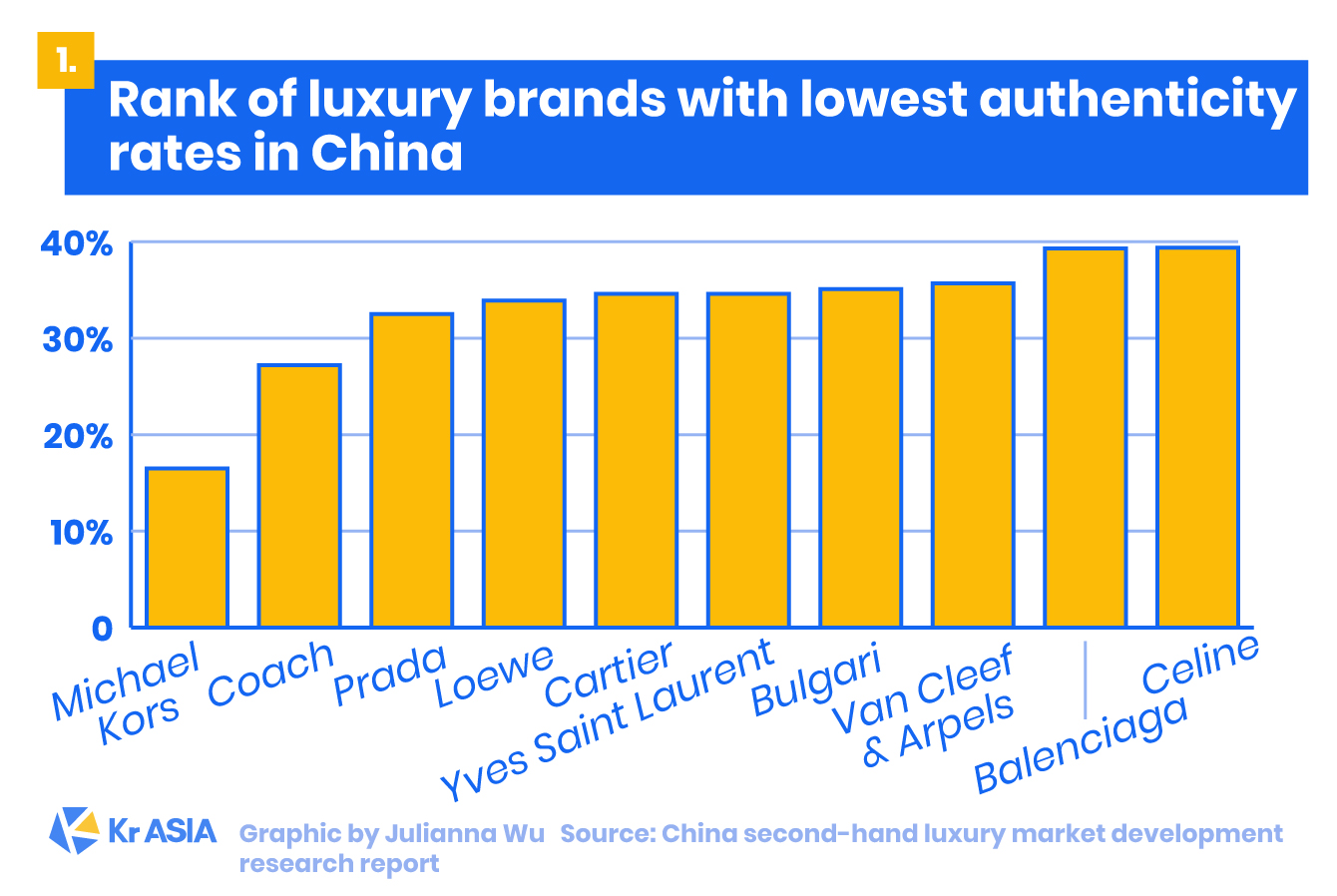
“Verification is the key to this business,” Zhang Chen, founder of Youshe Yipai, also a lecturer at China Luxury Research Center, told KrASIA, adding that “more than half of the players in second-hand luxury e-commerce died because of a lack of verification ability.”
A one-day class could enable a person to identify 90% of counterfeits on the market, Zhang told KrASIA, but for the remaining 10%, operators need several years of experience to conduct a proper verification. If a trading platform keeps on failing to identify fake goods, it would lose consumers’ trust, he affirmed.
To tackle the problem, Secoo, which started as a second-hand luxury trading platform 12 years ago and has grown into one of the biggest of its kind in China, set up Asia’s largest luxury goods appraisal center in Beijing, sprawling over an area of 8,000 square meters, with more than 80 senior global appraisers.
The company said they’ve adopted artificial intelligence (AI) technology to identify unique features of items, while they have been using blockchain technology to record features that ensure the traceability of luxury goods. “An item would go to image recognition for the first round of checking, then our experts would look at it themselves,” Li Rujia, vice-president of Seecoo told KrASIA. ” The whole process takes up to a day.”
Livestreaming on the rise
Internet technologies like livestreaming have also increased the efficiency of selling second-hand luxury goods. “Livestreaming is like moving an offline shop online, except one salesperson is facing multiple potential buyers instead of just one at a time,” said Li.
Secoo and its peers of Ponhu, Plum, Feiyu, and GoShare have either hired existing vloggers on various social media platforms or incubated their own influencers to tap into the livestreaming e-commerce trend since COVID-19.
According to local media Yicai, Secoo’s sales reached USD 220,000 in one single day during its international Women’s day livestreaming event in 2020, while GoShare 2 and Plum reported annual active user growth of 82.4% and 40.4% respectively this February.
A growing appetite for luxury
In the past decade, China’s growing middle-class, composed of white-collar employees, and rich millennials have purchased more than a third of the world’s luxury goods.
Currently, China has accumulated an estimated RMB 4 trillion (USD 600 billion) worth of luxury stock. However, the second-hand luxury market scale accounts for only 5% of the country’s luxury goods industry’s market size in 2019. By contrast, in other developed countries such as Japan and the US, the penetration of second-hand luxury goods reach between 20% and 30% of the overall market, according to the 2020 China second-hand luxury industry report.
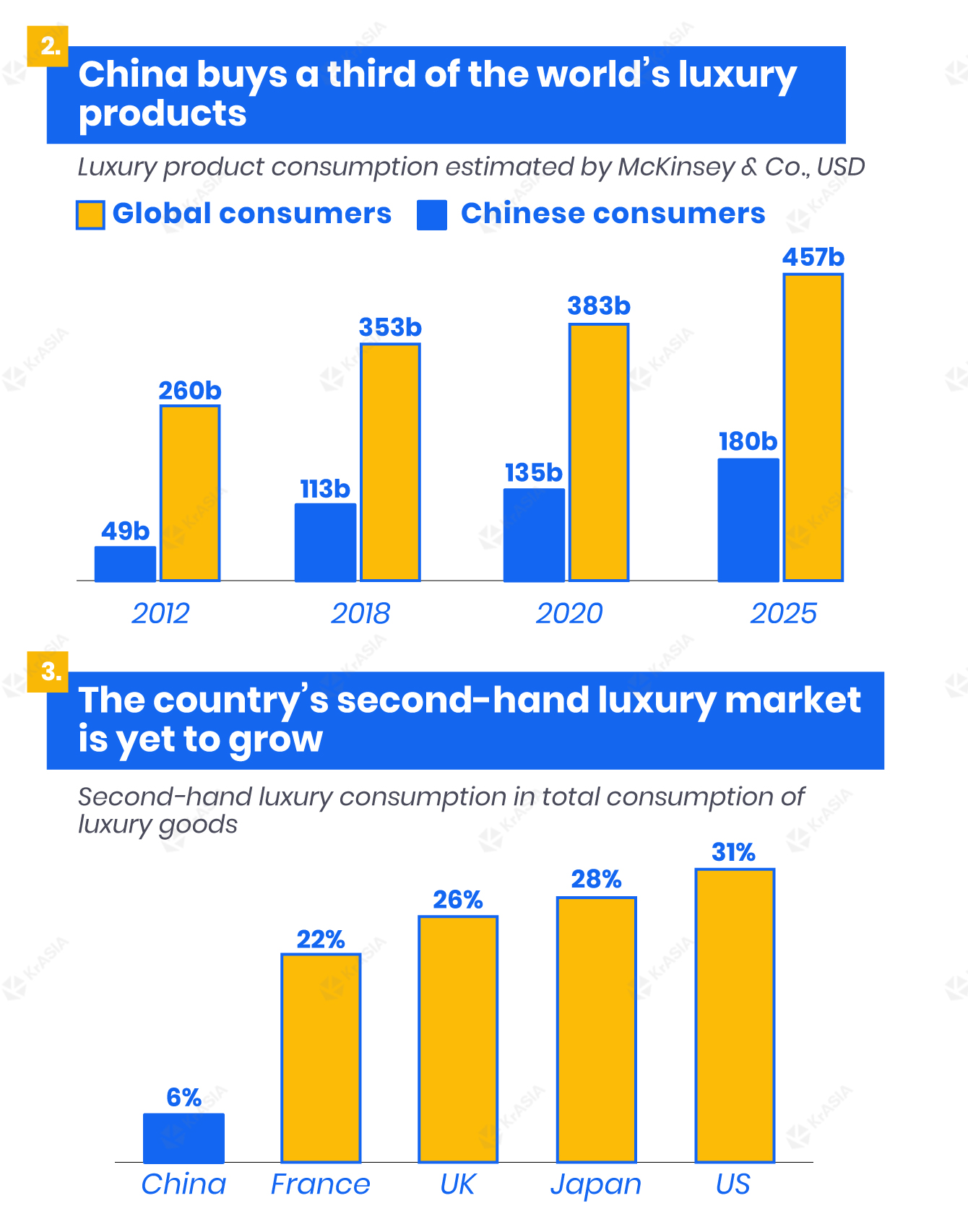
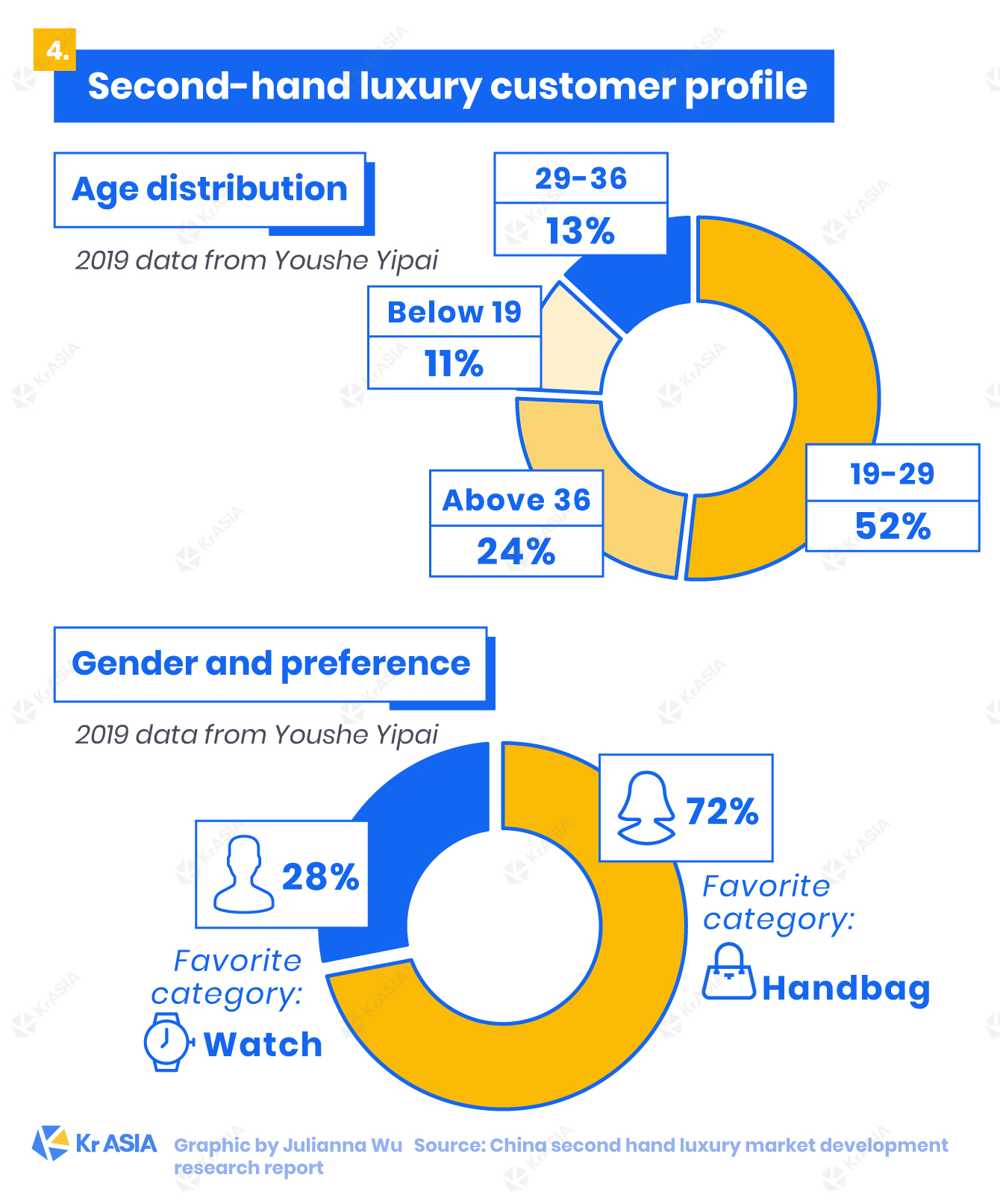
The second-hand luxury market usually booms when a country is experiencing an economic slowdown, appraisal expert and industry practitioner Zhang tells KrASIA. “When your monthly income drops, increasingly, you’ll want to sell the handbags in your closet.”
Below is a list compiled by KrASIA of the main players competing in the second-hand luxury market in China.
Secoo
Started 12 years ago as a second-hand luxury trading and verification platform, Nasdaq-listed Secoo (SECO) also ventured into first-hand luxury e-commerce, luxury goods care, and other related businesses. The firm has grown to be one of the biggest luxury goods service providers in China, with several offline shops in major cities. On its website, it claims a 25.3% of the premium consumption market share in China.
In the quarter past, the company’s gross merchandise value (GMV) hit USD 514.1 million, up 12.5% year-on-year. Yet, the firm reported a net income of USD 840,000, down 85% year-on-year on the impact of the COVID-19. The company’s market cap now stands at USD 196.4 million.
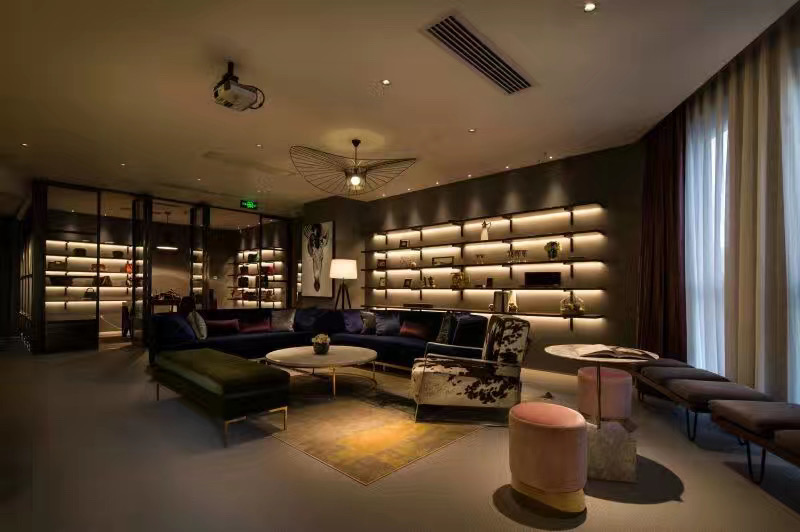
Ponhu
Founded in 2015, Ponhu collects idle luxury products from consumers, as well as various second-hand platforms, verifies their authenticity, and sells them to other customers, mainly businesses. The company owns four flagship stores, and over 50 franchisees and other affiliated stores in China.
The firm made revenue of RMB 600 million (USD 85 million) in 2019. In May 2020, Ponhu closed its USD 24.7 million Series B round from investors led by Fortune Capital and INCE Capital, KrASIA reported.
Plum
Claiming to be China’s biggest second-hand luxury e-marketplace, Plum mainly targets white-collar elites in top-tier cities. In August 2019, Plum’s founder Xu Wei told 36Kr that the platform has achieved a five-fold growth in nearly half a year in its number of users and GMV.
The company received a USD 20 million B+ round from investors include Qiming Capital and Matrix Partners China in August 2019.
Feiyu
Started as a livestreaming store of luxury products in 2016 on Taobao, Feiyu shifted its focus to the second-hand luxury market in 2018. The firm cooperates with many offline second-hand stores and has set up six warehouses around China with over 20,000 stock keeping units (SKU) said 36Kr.
The company closed an over USD 1.49 million Series A round in February.
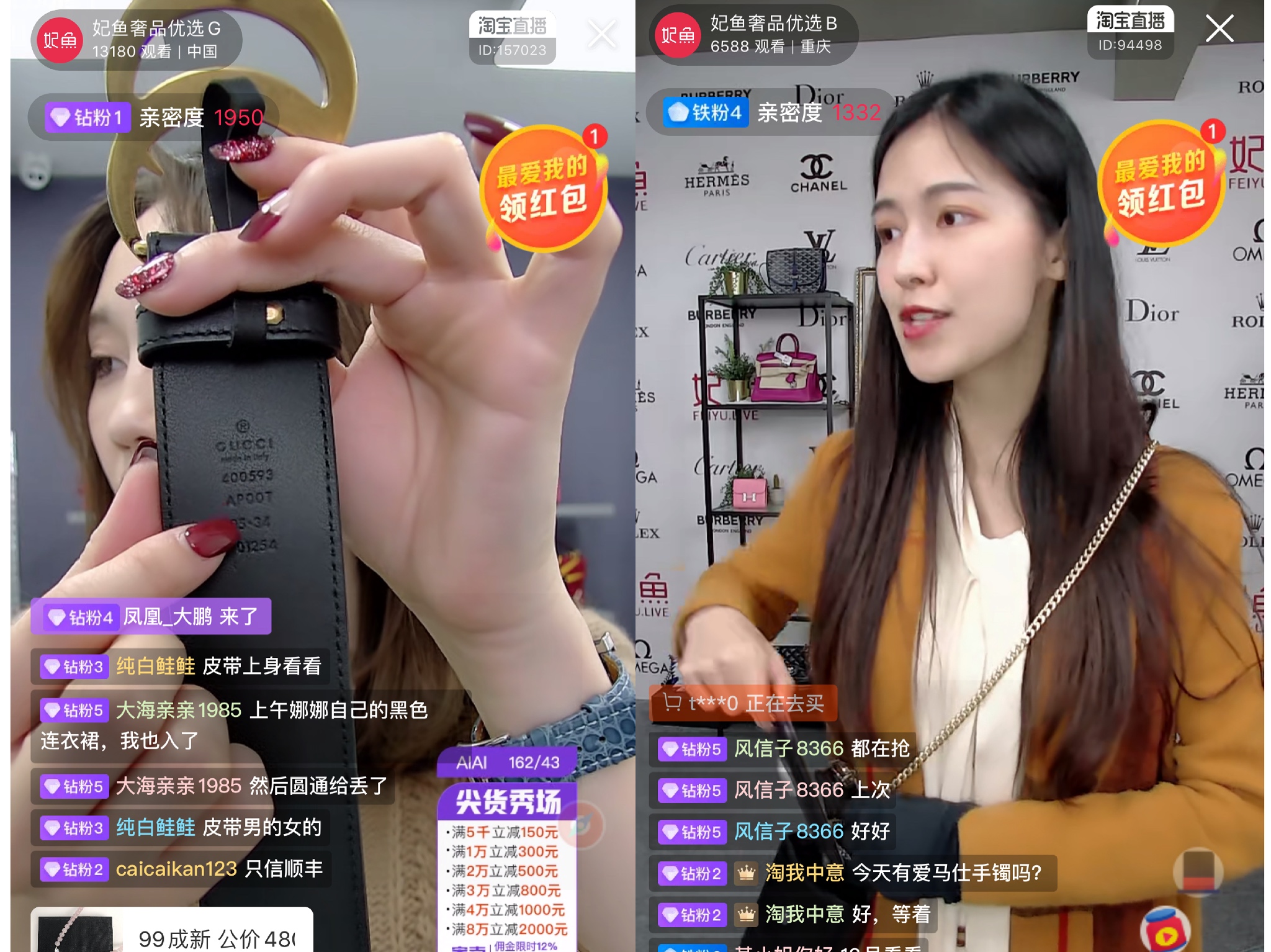
Go Share 2
Launched in early 2016 as a second-hand clothing trading app, GoShare has expanded to second-hand cosmetics and household items, in addition to luxury goods and jewelry.
The platform has over 2 million users with average spending of over RMB 1,000 (USD 148.8) per item, according to 36Kr. In July 2019, GoShare bagged over USD 1.49 million in a Series B round led by Hearst Ventures.

